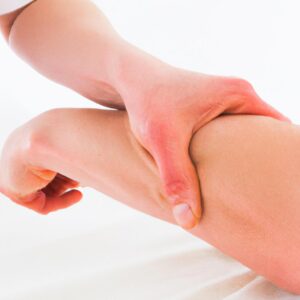Biomechanics of Running: Understanding the Impact of Foot Strike Patterns on Performance and Injury Prevention
# Biomechanics of Running: Understanding the Impact of Foot Strike Patterns on Performance and Injury Prevention
Running is a popular form of exercise that offers numerous physical and mental benefits. However, the mechanics of running are complex and can greatly influence performance and susceptibility to injuries. One of the most critical aspects of running biomechanics is the foot strike pattern, which refers to the part of the foot that first makes contact with the ground during a stride. This post will delve into the different foot strike patterns, their implications for performance, injury prevention, and the holistic approach to enhancing your running experience through nutritional support and exercise advice.
## Understanding Foot Strike Patterns
### Types of Foot Strike Patterns
Foot strike patterns can generally be categorized into three types: rearfoot strike, midfoot strike, and forefoot strike.
1. **Rearfoot Strike**: This is the most common foot strike pattern, where the heel makes initial contact with the ground. While it may be comfortable for many runners, it can lead to increased impact forces on the body, potentially contributing to injuries such as shin splints and plantar fasciitis.
2. **Midfoot Strike**: In this pattern, the midfoot lands flat on the ground. This strike has gained popularity due to its ability to distribute impact forces more evenly across the foot and lower leg, minimizing injury risk.
3. **Forefoot Strike**: With this pattern, the ball of the foot lands first, allowing for a more spring-like effect during running. While forefoot striking can enhance speed and agility, it may also increase the risk of calf and Achilles injuries if not practiced correctly.
### Impact on Performance
The choice of foot strike can significantly influence running efficiency, speed, and endurance. Studies have shown that runners who adopt a midfoot or forefoot strike may have better energy efficiency over long distances. However, it is crucial to recognize that transitioning from one strike pattern to another requires gradual adaptation to prevent stress injuries.
## Nutrition Tips
Proper nutrition plays a vital role in a runner’s performance and recovery. Here are some essential nutritional tips for runners:
– **Carbohydrates**: Fuel your runs with complex carbohydrates such as whole grains, fruits, and vegetables. They provide the necessary energy for endurance and performance.
– **Proteins**: Incorporate lean proteins, such as chicken, fish, beans, and legumes, to aid muscle repair and recovery after intense workouts.
– **Hydration**: Stay well-hydrated before, during, and after runs. Dehydration can impair performance and recovery, so aim for at least 8-10 cups of water daily, and adjust based on activity levels.
– **Micronutrients**: Pay attention to essential vitamins and minerals, particularly calcium, vitamin D, and magnesium, which support bone health and muscle function.
## Exercise Advice
To enhance running performance and minimize injury risks, consider the following exercise advice:
– **Strength Training**: Incorporate strength training exercises targeting the core, hips, and legs to improve stability and power. Exercises like squats, lunges, and planks can help enhance overall running efficiency.
– **Flexibility Work**: Regular stretching and mobility exercises can improve your range of motion and reduce the risk of strains. Yoga and dynamic stretching routines are excellent for maintaining flexibility.
– **Gradual Adaptation**: If you’re looking to change your foot strike pattern, do so gradually. Start with short distances and slowly increase your mileage while allowing your body to adapt.
– **Cross-Training**: Engage in cross-training activities such as cycling, swimming, or rowing. These activities provide cardiovascular benefits while reducing the repetitive impact on your joints.
## Health Benefits
Running offers a plethora of health benefits beyond just improved fitness. Some key health benefits include:
– **Cardiovascular Health**: Regular running strengthens the heart, improves circulation, and can lower the risk of heart disease.
– **Weight Management**: Running is an effective way to burn calories and maintain a healthy weight, making it a vital component of any fitness regimen.
– **Mental Health**: Running has been shown to reduce symptoms of anxiety and depression. The endorphins released during exercise can improve mood and overall mental well-being.
– **Bone Density**: Weight-bearing exercises like running help increase bone density, reducing the risk of osteoporosis and fractures.
## Conclusion
Understanding the biomechanics of running, particularly the impact of foot strike patterns, is crucial for enhancing performance and preventing injuries. By focusing















Post Comment